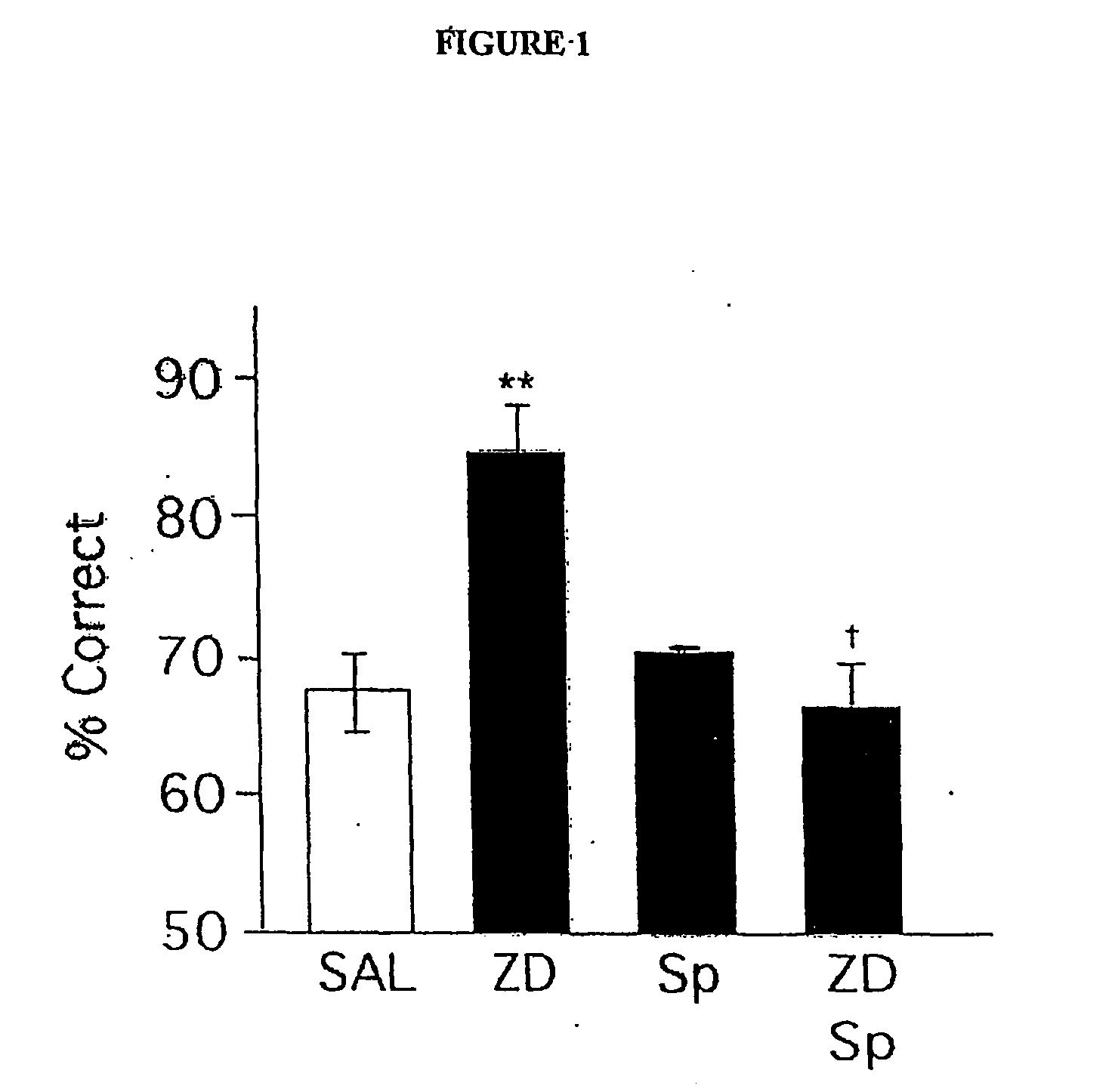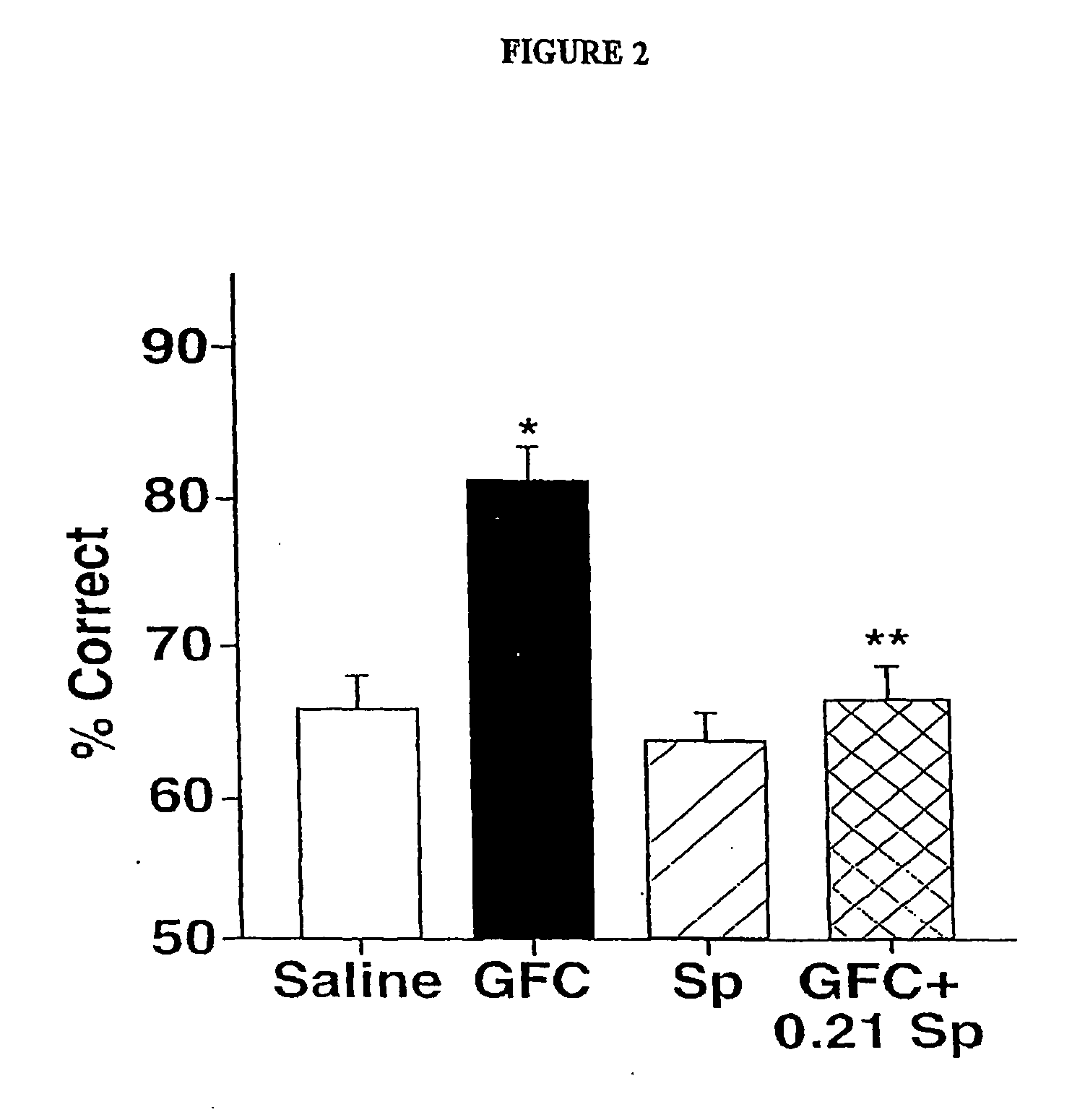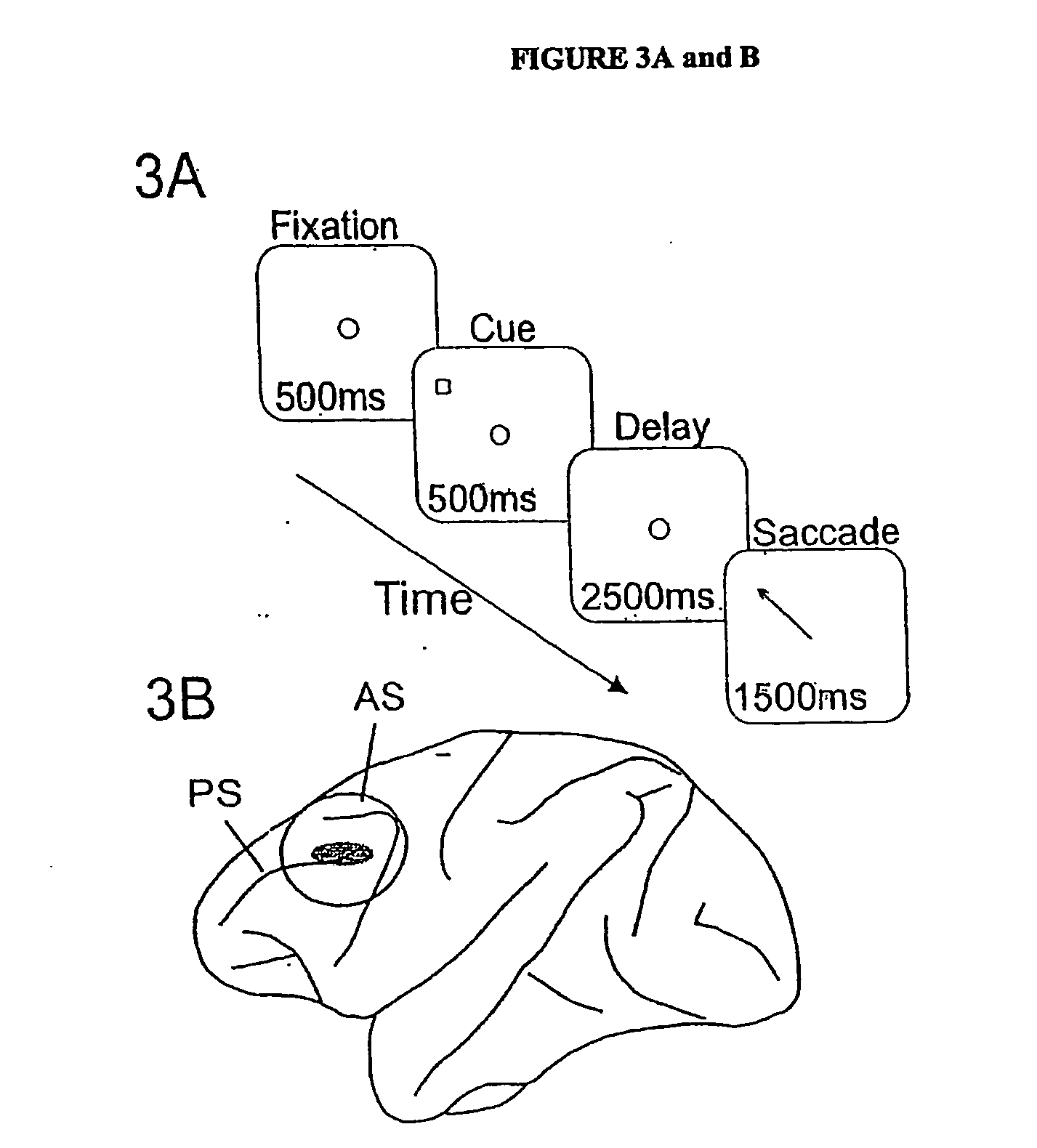Compositions and Methods for Treating Cognitive Disorders
a cognitive disorder and composition technology, applied in the field of cognitive disorders, can solve the problems of camp signaling impairing pfc cognitive operations at the cellular level, molecular events underlying these therapeutic effects have not been known, and achieve the effects of reducing network activity, increasing cortical inputs, and inhibiting camp production
- Summary
- Abstract
- Description
- Claims
- Application Information
AI Technical Summary
Benefits of technology
Problems solved by technology
Method used
Image
Examples
example
Spatial Working Memory Performance in Rats
[0068]Rats (n=5) were tested on the spatial delayed alternation task in a T maze, a classical test of prefrontal cortical function in rodents (Larsen and Divac, Physiolog Psychol, 6:15-17, 1978). Rats were trained on the task, and then implanted with cannula aimed at the prelimbic prefrontal cortex as described in (Ramos, et al., Neuron, 40:835-845, 2003). Following recovery from surgery, rats were infused with saline (0.5 μl), the Ih channel blocker ZD7288 (0.0001 μg / 0.5 μl), the cAMP analog Sp-cAMPS (0.21 nmol / 0.5 μl), or a combination of ZD7288 (0.0001 μg)+Sp-cAMPS (0.21 nmol). There was at least one week washout between drug treatments, and a within subjects comparison was performed (2 way analysis of variance with repeated measures with user defined contrasts). As can be seen in FIG. 1, ZD7288 infusions into rat prefrontal cortex significantly improved working memory performance compared to saline control (F(1,4)=42.7, p=0.003). This im...
PUM
| Property | Measurement | Unit |
|---|---|---|
| pH | aaaaa | aaaaa |
| cognitive disorder | aaaaa | aaaaa |
| structure | aaaaa | aaaaa |
Abstract
Description
Claims
Application Information
 Login to View More
Login to View More - R&D
- Intellectual Property
- Life Sciences
- Materials
- Tech Scout
- Unparalleled Data Quality
- Higher Quality Content
- 60% Fewer Hallucinations
Browse by: Latest US Patents, China's latest patents, Technical Efficacy Thesaurus, Application Domain, Technology Topic, Popular Technical Reports.
© 2025 PatSnap. All rights reserved.Legal|Privacy policy|Modern Slavery Act Transparency Statement|Sitemap|About US| Contact US: help@patsnap.com



